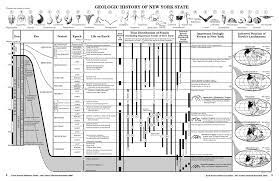Mastering Math: The Comprehensive Guide to Multiplication Chart 1-100
Math is a fundamental expertise that assumes an essential part in our regular routines, and one of the central structure blocks of math is duplication. A multiplication chart 1-100 is an integral asset that can help understudies, educators, and guardians get it and dominate augmentation ideas. In this thorough aide, we’ll investigate all that you want to realize about the augmentation graph 1-100, its advantages, and how to actually utilize it.
What is a multiplication chart for 1–100?
A multiplication chart 1-100 is a matrix that shows the results of increasing numbers from 1 to 100. This diagram envisions increased interaction and fills in as a fast reference for tackling duplication issues. The lines and segments of the outline address the multiplicands and multipliers, while the meeting cells show the subsequent items.
The construction of a multiplication chart (1–100)
A multiplication chart 1–100 comprises 100 lines and 100 segments. The top line and the main segment ordinarily contain the numbers 1 through 100. Every cell inside the outline addresses the result of the numbers from its corresponding line and segment. For instance, the cell where line 3 meets with section 4 will contain the number 12 (3 x 4 = 12).
Advantages of Utilizing a Multiplication Chart: 1–100
1. Visual Learning Help
An increase in outline 1-100 gives a visual portrayal of duplication realities, making it simpler for understudies to comprehend and retain them. The outline permits understudies to see examples and connections between numbers, which can upgrade their by-and-large numerical comprehension.
2. Fast Reference Apparatus
Having an increase in outline 1-100 can save time while taking care of duplication issues. Rather than physically computing every item, understudies can rapidly look into the response on the graph. This can be particularly useful during tests and schoolwork.
3. Fabricates Certainty
Dominating duplication is a huge achievement in a youngster’s numerical excursion. Utilizing a duplication diagram 1–100 can construct certainty by giving a dependable asset to rehearsing and checking increased realities. This certainty can be converted into further developed execution in number-related classes and then some.
4. Upholds Progressed Number-Related Abilities
A solid groundwork in duplication is fundamental for handling further developed number-related ideas like division, parts, and variable-based math. By utilizing an increase diagram 1-100, understudies can support their duplication abilities and get ready for future numerical difficulties.
Instructions to Utilize a Duplication Outline 1-100 Successfully
1. Really get to know the diagram.
Prior to plunging into duplication issues, find an opportunity to get to know the format of the outline. Comprehend how the lines and sections compare to the numbers being duplicated, and work on finding items inside the lattice.
2. Practice consistently.
Steady practice is vital to dominating duplication. Put away the opportunity every day to work with the augmentation graph 1-100. Begin by zeroing in on each number in turn, like the 2s or 5s, and bit by bit move gradually up to additional mind-boggling duplications.
3. Utilize the diagram for schoolwork and tests.
Urge understudies to utilize the increase graph 1-100 as a kind of perspective instrument for schoolwork tasks and tests. This can assist them with confirming their responses and support how they might interpret augmentation realities.
4. Integrate games and exercises.
Make learning more fun by integrating games and exercises that utilize the multiplication chart 1-100. For instance, you can make cheat sheets with augmentation issues and have understudies utilize the outline to track down the responses. This intuitive methodology can make learning seriously captivating and pleasant.
Tips for Guardians and Instructors
1. Energize Retention
While the increase graph 1-100 is a useful reference, understudies should retain duplication realities. Support everyday practice and use redundancy procedures to assist understudies with committing these realities to memory.
2. Make it intelligent.
Connect with understudies by utilizing intelligent exercises and games that consolidate the augmentation graph 1–100. This can incorporate internet-based assets, instructive applications, and involved exercises that make learning duplication more powerful and fun.
3. Give encouraging feedback.
Commend understudies’ advancement and achievements in dominating duplication. Encouraging feedback can help provide certainty and inspiration, making the growing experience seriously fulfilling.
4. Utilize genuine models.
Assist understudies in seeing the reasonable utilization of duplication by utilizing true models. This can incorporate exercises like cooking, shopping, and building projects, where augmentation is utilized in ordinary circumstances.
Printable Augmentation Graph 1-100
For added comfort, consider giving understudies a printable duplication outline (1–100). This can be an important asset for at-home practice and can be effortlessly gotten to at whatever point is required.
High-level systems for duplication dominance
1. Skip counting
Skip counting is a successful system for grasping duplication. By counting by 2s, 5s, 10s, and different numbers, understudies can rapidly embrace the idea of augmentation and perceive designs inside the outline.
2. Gathering and Exhibits
Train understudies to envision augmentation as gathering objects or making clusters. For instance, to duplicate 3 x 4, understudies can draw three gatherings of four items or a 3 x 4 exhibit. This involved methodology can make duplication more unmistakable and obvious.
3. Separating Issues
Urge understudies to separate more complicated issues into more modest, more reasonable parts. For instance, to tackle 12 x 8, understudies can separate it into (10 x 8) + (2 x 8) and then add the outcomes. This technique works on the cycle and supports augmentation ideas.
Normal Difficulties and Arrangements
1. Trouble remembering realities
A few understudies might struggle with remembering more realities. To address this, give standard practice, utilize memory helpers, and energize the utilization of the duplication graph 1-100 as a source of perspective.
2. Disarray with Bigger Numbers
Increasing numbers can be scary for understudies. Separate the interaction into more modest advances, utilize visual guides like the duplication graph 1-100, and give a lot of training to construct certainty.
3. Absence of commitment
Keeping understudies drawn in can be a test. Integrate intuitive exercises, games, and true guides to make learning augmentation really intriguing and important.
End
A multiplication chart 1-100 is a priceless device for dominating duplication. By giving a visual portrayal of increasing realities, this graph helps understudies comprehend and retain fundamental numerical ideas. Whether you’re an understudy, educator, or parent, utilizing a duplication graph 1-100 can upgrade numerical grasping, form certainty, and support progressed number-related abilities. With steady practice, intuitive exercises, and encouraging feedback, understudies can accomplish duplication dominance and set areas of strength for future number-related achievement.






























+ There are no comments
Add yours